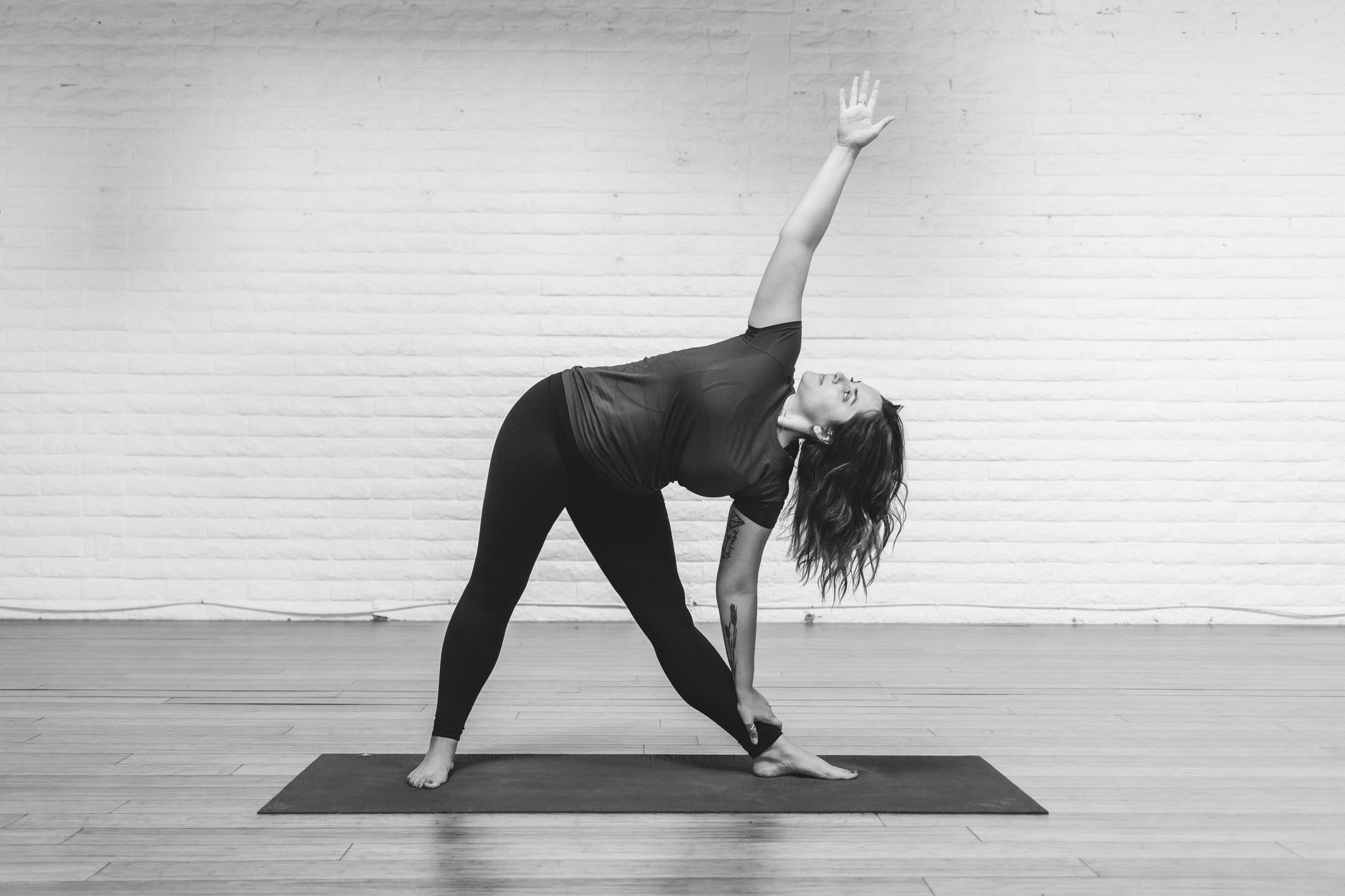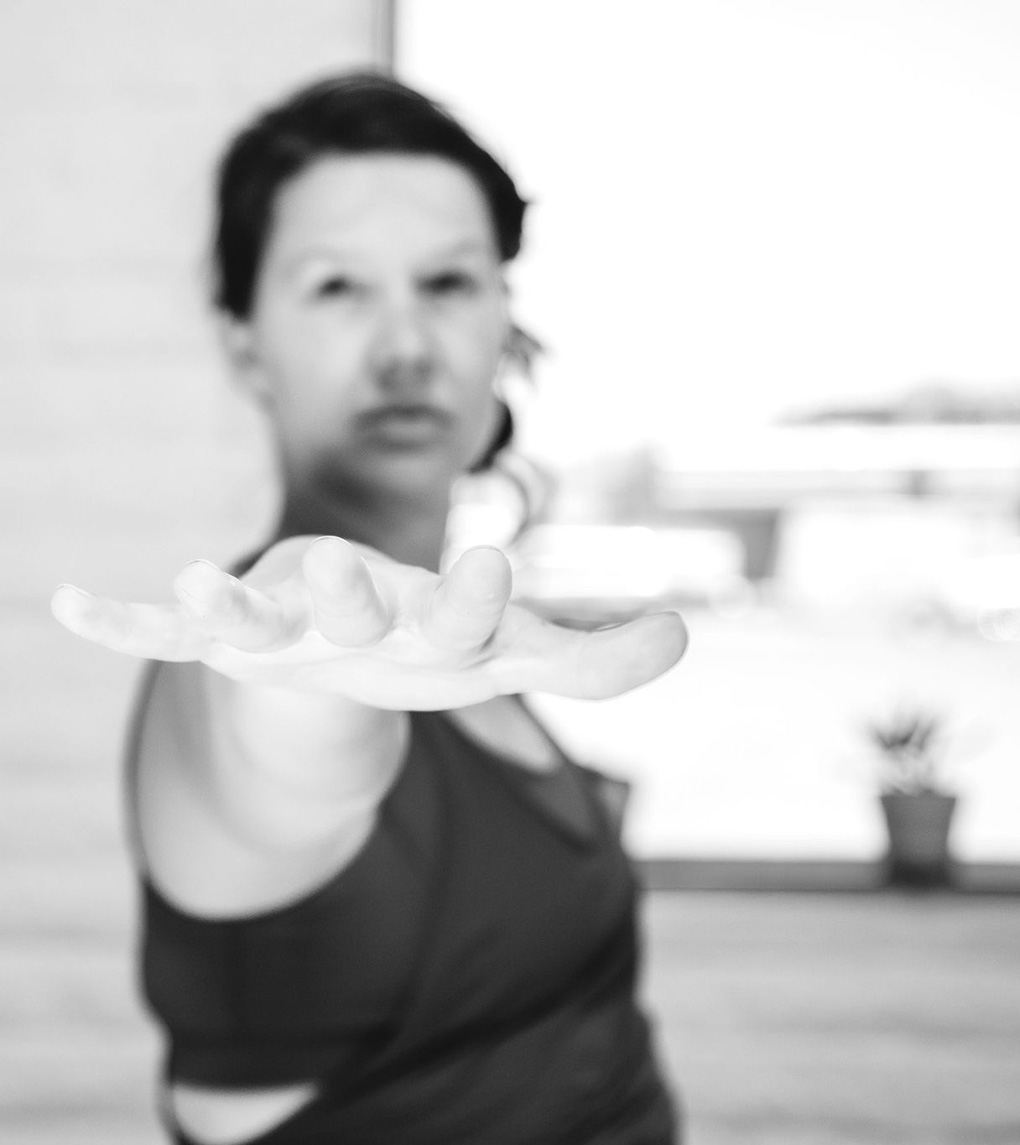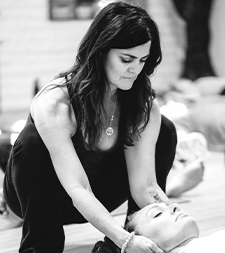The 8 Limbs of Yoga

When you take a yoga class, typically, you are taking an asana (seat or posture) class.
Most yoga classes (in the west) focus on the physical aspect of yoga, which is a beautiful component of yoga. However, to enjoy a complete experience of yoga, there are more limbs (or aspects) that you can integrate into your practice.
Written around 500 B.C. (during India’s medieval age) by a sage named Patanjali, the sutras define the eight limbs of yoga, which teach us how to embody yoga (unity) in mind, body, and spirit.
The true meaning of yoga is the absence of pain and sorrow. It is becoming aware of and connecting your finite everyday self with your infinite Self.
We don’t actually have to find it anywhere, we simply do these practices consistently and our true self is revealed.
Through repetition, it happens accumulatively and spontaneously.
Yoga is vast, and there have been many evolutions over many millennia. One of the philosophies that have stuck with us in our modern yoga world is the 8 Limbs of Yoga.
These aspects of yoga work together to help us learn how to direct our energies and control our restless minds.
Patanjali identified eight interrelated aspects of Yoga practice. They have been around for quite some time, however, keep in mind this is one of many yogic philosophies.
This system can help to create deeper meaning in your asana and yoga practice.
THE 8 LIMBS OF YOGA – A set of observances and practices that come from The Yoga Sutras by Patanjali.
1. YAMAS – (Five restraints) These are the way we treat others and primarily the world around us. While the physical practice (asana) of yoga will keep our body healthy, these other practices will help strengthen our relationship with our practice, ourselves, and others.
- Ahimsa (non-violence)
- Satya (truth)
- Asteya (non-stealing)
- Brahmacharya (self-restraint)
- Aparigraha (non-possessiveness)
2. NIYAMAS (Five observances) Tools to cultivate individual happiness. These are the ways we treat ourselves, our bodies, and our minds and will strengthen the relationship with the Self.
- Saucha (cleanliness)
- Santosa (contentment)
- Tapas (determination)
- Svadhyaya (self-study)
- Ishvara Pranidhana (devotion)
3. ASANA – Postures for health and meditation.
4. PRANAYAMA – Can be understood in two different ways. It can be prana yama, which means breath restraint or control, or Prana-Ayama. Prana means life force. Ayama means direction, redirection, expansion, or freedom. There are hundreds of different types of pranayama (breath techniques) that can create many effects.
You can choose a more calming practice like Nadi Shodhana (alternate nostril breathing) or Kapalabhati (skull-shining breath). The purpose of breathing in a specific way brings balance to your current energy.
5. PRATYAHARA – Synchronization of senses & thoughts or withdrawal of the senses. Pratya means to withdraw or take back. Ahara means anything we take in, like sights, sounds, and smells. During savasana or meditation, you might feel like you are withdrawing, like your attention and awareness are moving inward. When you feel this, allow yourself to explore your vast potential.
6. DHARANA – One-pointed concentration. Dhar means holding or maintaining. Ana means other or something else. This is like training for meditation. You could be focusing on a sound, your breath, or a word. The repetition of a focal point can take you into the state of meditation.
7. DHYANA – Deep meditation – As we concentrate with or without effort, we can begin to become absorbed in this state. Dhy, means receptacle or the mind. Yana, means moving or going. The funny thing about meditation is, that when you are in it, you do not know it, and as soon as you know it, you are not “in it” anymore. The state of meditation is the result of some or all of the limbs before it and is the effect, not something you do.
8. SAMADHI – Awakening and absorption with spirit. Sama means equal. Dhi means to see. This is when you are beyond meditation and feel complete absorption with your infinite Self, consciousness, and bliss. It is not about leaving this world, but the realization that “to see” means that there is no separation between you and the universal creative force.
These practices can be studied and practiced independently of your asana practice. And you can integrate them as you go.
Begin with an attitude or awareness, breathe in a specific way, soften your senses, concentrate, meditate, and then surrender to your infinite Self.
Like your asana practice, these aspects grow and evolve. The more you focus on them, the easier they are to grasp. Experiment by choosing one limb to think about for the day or begin your asana practice with one in mind. Hold your attention for example, on Ahimsa (non-harming) and notice if this brings more compassion for your body or for those around you to your practice.
As you continue to integrate these aspects, your yoga practice and life begin to expand and take on a whole new meaning.
Get the Grit—inspiration & yoga tips
"*" indicates required fields
Copyright ©2020 Ironwood Yoga Studios | Site made with love by Jamie Leigh | Gift Cards | Donate | Login







0 Comments